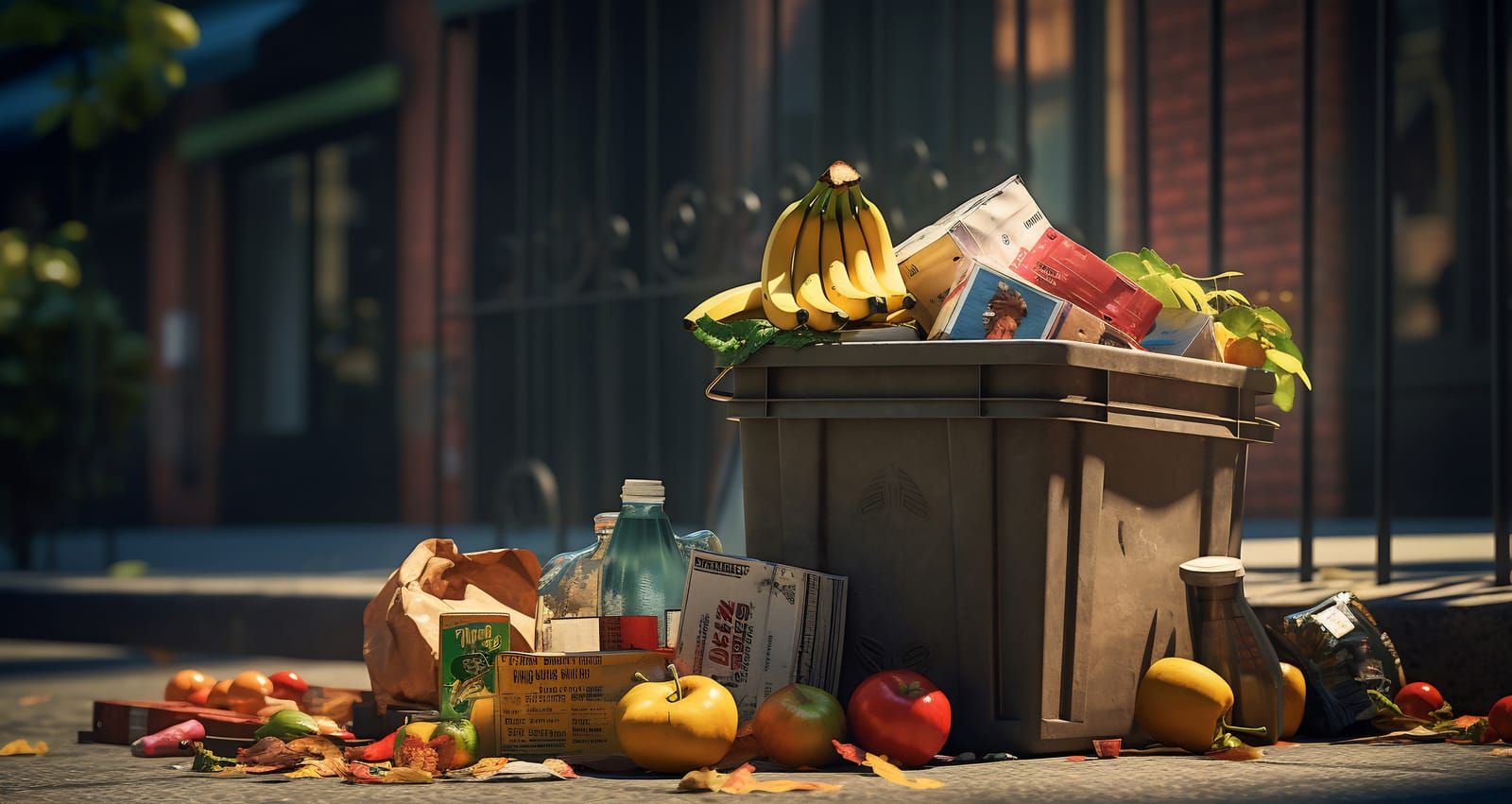You see it every day: the half-eaten meal, the wilted lettuce in the crisper, the bread that went stale. While it may seem like a small personal failure, this household experience is a window into one of Canada’s most staggering and unnecessary crises. Each year, Canada wastes an enormous amount of perfectly good food, a problem with profound environmental, economic, and social consequences.
But where does all this waste come from? Why is a country with rising food bank use throwing away billions of dollars worth of food? This is the full story on the roots of Canada’s food waste crisis, from the farm to your fridge.
Part 1: The Shocking Scale of the Problem
The numbers behind Canada’s food waste problem are difficult to comprehend. According to a landmark report by Second Harvest, Canada’s largest food rescue organization, nearly 60% of all food produced in Canada is lost or wasted annually. This amounts to a staggering 35.5 million metric tonnes of food.
Of that amount, approximately one-third—or 11.2 million metric tonnes—is considered “avoidable” food loss and waste. This is perfectly edible food that could have been eaten by people. This avoidable waste has a retail value of nearly **$50 billion**, a figure equivalent to over 2% of Canada’s GDP. On a global scale, the UN Environment Programme’s Food Waste Index confirms that Canada has a significant food waste problem, particularly at the household level.
Part 2: A Journey Down the Supply Chain – Where Waste Happens
Food waste is not a single event; it’s a systemic problem that occurs at every step of the complex journey from where our food is grown to where it is consumed.
On the Farm (Production)
A significant amount of waste happens before food ever leaves the farm. This can be due to unpredictable weather, pests, or labour shortages that prevent a harvest. A major driver is also strict cosmetic standards from major retailers. Tonnes of fresh fruits and vegetables are left to rot in the field simply because they are misshapen, discoloured, or the “wrong” size, even though they are perfectly nutritious.
In the Factory (Processing & Manufacturing)
During processing, food is lost due to trimming, peelings, and technical inefficiencies. For example, when creating perfectly uniform products like french fries or baby carrots, the off-cuts are often discarded. While some of this is repurposed for animal feed, a significant portion is lost.
In the Store (Retail)
Grocery stores are a major source of food waste. Overstocking to ensure shelves always look full, damage to packaging, and the removal of products approaching their “best before” dates all contribute. The confusion over date labelling is a key issue. As Health Canada clarifies, “best before” dates are about peak freshness, not food safety (with a few exceptions). However, both stores and consumers often treat them as expiry dates, leading to the disposal of safe, edible food.
Part 3: The Household Factor – The Biggest Piece of the Pie
While waste occurs across the system, the single largest source of avoidable food waste in Canada comes from our own homes. According to Second Harvest’s research, **households account for 21% of all food waste**, making consumers the biggest contributors to the problem. The main reasons for household waste are buying too much food, poor meal planning, and not eating leftovers.
Part 4: The Triple Impact of Food Waste
Wasting food is more than just a shame; it has severe and measurable consequences.
- Environmental Impact: When food rots in a landfill, it decomposes without oxygen and produces methane, a greenhouse gas that is far more potent than carbon dioxide. Food waste in Canada is responsible for an estimated 56.6 million tonnes of CO2 equivalent emissions each year. It’s also a tremendous waste of the water, energy, and land used to produce the food in the first place.
- Economic Impact: The $50 billion of wasted food represents a massive loss to the Canadian economy and a direct hit to household budgets. The average Canadian household is estimated to throw away over $1,700 worth of food each year.
- Social Impact: The social cost is perhaps the most profound. In a country where, according to Food Banks Canada, millions of people face food insecurity, the fact that we are throwing away enough edible food to feed every Canadian for months is a deep moral and social failure.
Part 5: The Rise of Solutions
The good news is that awareness of the food waste crisis is growing, and a wave of innovation is emerging to tackle the problem.
- Policy & Government Action: The Government of Canada has launched initiatives like the Food Waste Reduction Challenge to fund innovative solutions and is developing a national food policy that addresses waste.
- Food Rescue Organizations: Groups like Second Harvest have built sophisticated logistical networks to rescue surplus, edible food from farms, processors, and retailers and redistribute it to thousands of charities and non-profits serving vulnerable people.
- Innovative Apps: A new generation of apps is empowering consumers to be part of the solution. Apps like Flashfood (partnered with Loblaws) and Too Good To Go allow shoppers to buy food nearing its best-before date at a steep discount, saving them money and preventing that food from being thrown away by the store.
- Upcycling Companies: Innovative businesses like Loop Mission are “upcycling” imperfect produce that would otherwise be wasted into value-added products like juices, soaps, and snacks.
The Bottom Line
Canada’s food waste crisis is a complex, systemic problem, but it is not unsolvable. It requires a combination of government policy, corporate responsibility, and, most importantly, a shift in consumer behaviour. By understanding where and why waste happens, and by embracing the growing number of innovative solutions, we can begin to turn this avoidable crisis into an opportunity for a more sustainable, equitable, and efficient food system for all.

